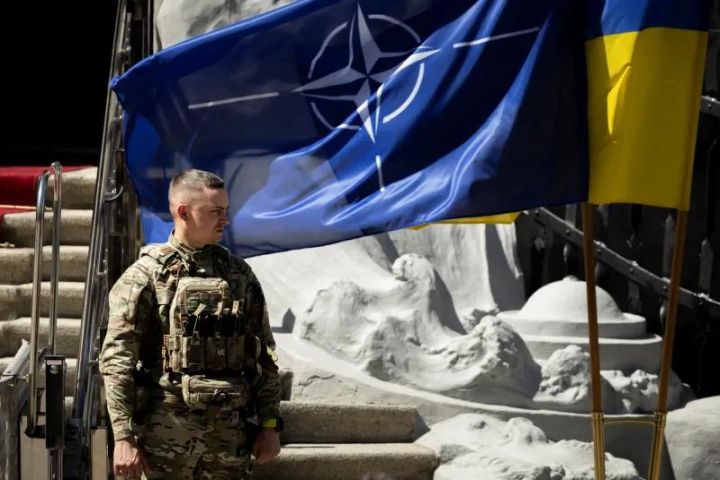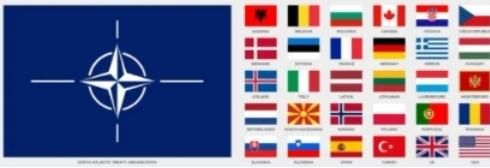By Eric Vandenbroeck and co-workers
The End of NATO?
Last month, NATO, the world’s most
successful military alliance, celebrated its 75th anniversary. Some fear that
it may have been its last anniversary with the United States playing a leading
role. Former U.S. President Donald Trump still views the alliance as obsolete.
If re-elected, he says he would encourage Russian leaders to do “whatever the
hell they want” to member states that do not pay what he considers to be enough
for defense. A second Trump presidency could have dire implications for
European security.
Trump’s defenders
argue that he is bluffing to pressure Europe into spending more on defense. But
former U.S. officials who worked closely with Trump on NATO during his tenure,
including one of us (R.D. Hooker Jr.), are convinced he will withdraw from the
alliance if reelected. Trump hugely resents the more moderate advisers who kept
him in check during his first term. If he reaches the White House in 2025, the
guardrails will be off.
The U.S. Congress is
concerned, too. It recently enacted legislation to prohibit a president from
withdrawing from NATO unless Congress approves, either by a two-thirds vote in
the Senate or an act of both houses of Congress. But Trump could circumvent this
prohibition. He has already raised doubts about his willingness to honor NATO’s
Article 5 mutual defense clause. By withholding funding, recalling U.S. troops
and commanders from Europe, and blocking important decisions in the North
Atlantic Council (NATO’s top deliberative body), Trump can dramatically weaken
the alliance without formally leaving it. Even if he does not withdraw American
support completely, Trump’s current position on NATO and his disinterest in
supporting Ukraine, if adopted as national policy, would shatter European
confidence in American leadership and military resolve.
A Ukrainian
serviceman at a press conference of Ukrainian President Volodymyr Zelensky and
NATO Secretary-General Jens Stoltenberg, Kyiv, April 2024

Europe, Abandoned
If Trump is reelected
and follows through on his anti-NATO instincts, the first casualty would be
Ukraine. Trump has opposed additional military aid to Kyiv and continues to
fawn over Russian President Vladimir Putin. NATO Secretary-General Jens
Stoltenberg is already trying to Trump-proof aid to Ukraine by coordinating it
under the aegis of the alliance rather than the U.S.-led Ukraine Defense
Contact Group. Should the United States weaken or terminate its defense
commitment to Europe under Trump, European countries would feel more vulnerable
and may become increasingly reluctant to send Ukraine their vital military
supplies. With dramatic aid cuts, Kyiv could be forced to negotiate an
unfavorable agreement with Moscow that would leave Ukraine a rump state
militarily and economically vulnerable to Russia. Should Ukraine’s defenses
collapse altogether, brutal repression and forced Russification await some 38
million people.
The disastrous consequences would only start there. A
deflated NATO would struggle to mount an effective conventional deterrent
against further Russian aggression. Russia is now on a war footing, spending
six percent of its GDP on defense, and its authoritarian leader is committed to
an ultra-nationalistic mission to consolidate his rule over what he calls the
“Russian world,” an unspecified geographic space that extends well beyond his
country’s internationally recognized borders. Moscow could reconstitute its
armed forces relatively quickly. After subjugating all of Ukraine, Putin would
probably focus on the Baltic states—NATO members covered by the alliance’s
security umbrella but claimed as historic Russian lands by Putin. Should NATO’s
conventional deterrence be weakened by the withdrawal of U.S. support, Russia
would only be tempted to act more brazenly.
NATO countries collectively now spend two percent of
GDP on defense, but, in the absence U.S. support, European armies are still not
sufficiently prepared, equipped, and able to fight against a major-power
adversary. Europe remains heavily reliant on the United States in several
important areas. On its own, it lacks many of the key tools necessary
for successful defense, including airlift capabilities, air-to-air refueling,
high-altitude air defense, space assets, and operational intelligence—these are
all supplied primarily by the United States. Without American help, NATO would
lose much of its military edge over Russia. Europe’s defense industry remains
badly fragmented, and developing the needed defense capacities to compensate
for the loss of American backing could take the remainder of this decade.
Should the United
States abandon NATO, the erosion of nuclear deterrence would severely compound
Europe’s conventional deterrence problem. Nuclear weapons underpin the United
States’ commitment to defend its allies and its nuclear capabilities form the bedrock
of NATO’s capacity for deterrence. Should Trump close the American nuclear
umbrella, Europe would have to rely on less than 600 British and French
strategic nuclear warheads, a fraction of Russia’s total force of over 5,000
strategic and tactical nuclear warheads. Since Europe has no tactical nuclear
weapons, it can hope to deter a Russian tactical nuclear attack only by
threatening escalation to the strategic level, a move that Moscow may not find
credible. In an attempt to scare Europeans away from backing Ukraine, Russia
has on many occasions hinted it might use tactical nuclear weapons. Unlike the
United States, France and the United Kingdom have not extended their nuclear
deterrent to protect their allies. Should Washington leave Europe to fend for
itself, Moscow might calculate that it could successfully resort to nuclear
blackmail to capture the territory of NATO member states.

Without U.S.
leadership in NATO, cohesion and unity among members would be difficult to maintain.
It often requires a strong American voice to bring disparate member states to a
consensus. Since NATO’s founding, a U.S. general officer has led the
organization’s command structure, overseeing the military activities of all
NATO member states. It is doubtful that any other country in the alliance could
play this role.
NATO without the
United States might limp along, but it is more likely that the alliance would
collapse altogether. The European Union is not in a position to take NATO’s
place any time soon, as its military capabilities are limited and more capable
of managing regional crises than fighting major wars. Even if a rump NATO
survives without strong American involvement, the challenges of divided
leadership, inadequate deterrence capabilities, and an assertive adversary
would heighten the risk of war with Russia, a major power bent on overturning
the liberal international order.
The Fallout
The damage would not
be limited to Europe. If Trump wants to withdraw from NATO to punish allies for
their inadequate defense spending, why would the United States maintain its
commitments to its Asian allies, many of whom currently spend even less than NATO
countries? For now, the defense ties between the United States and its allies
in Asia, such as Australia, Japan, and South Korea, are growing stronger in the
face of Chinese provocations. But a lack of confidence in U.S. commitments may
well lead some of these countries to pursue nuclear weapons to offset China’s
and North Korea’s nuclear advantages, undercutting the fragile stability that
has prevailed in the region for decades. The withering of U.S. global
leadership would also have profoundly negative consequences in the Middle East,
where U.S. forces and U.S.-led coalitions are needed to deal with terrorist
threats.
The United States’
economy might also suffer. Should a breakdown of deterrence trigger a general
war with Russia or China, the economic costs would be staggering. Just a few
Houthi fighters in Yemen have been able to disrupt global shipping through
their attacks in the Red Sea. Imagine the consequences of a war among major
powers. Moreover, trade ties often follow security ties. Last year, two-way
transatlantic trade in goods topped $1.2 trillion. The United States has about
$4 trillion invested in European industry. Some five million Americans work in
European-owned industries. The United States has a huge economic stake in
maintaining a peaceful Europe.
The United States has
been here before. Prior to both world wars, Washington sought neutrality.
Neither effort at isolationism worked and only prevented the United States from
being able to help deter the aggressors in those wars. Eventually, the United States
was pulled into both conflicts. After World War II, having learned the dangers
of isolationism, the United States remained engaged and paved the way for the
founding of NATO and 75 years of relative peace in Europe. The United States
must not forget the painful lessons of the last century. To do so would risk
undercutting U.S. global leadership, undermining the Washington-built
international order, and making the world safer for authoritarian rule.
For updates click hompage here